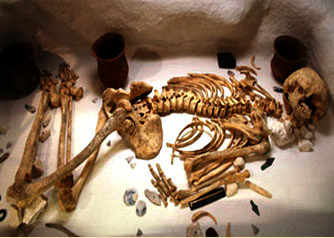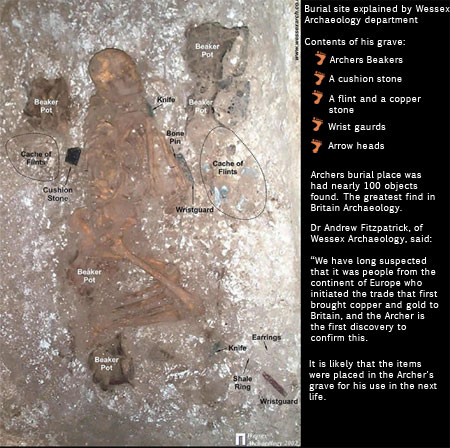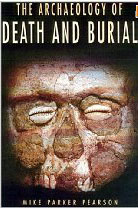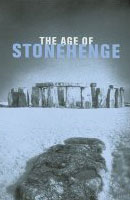- Latest Archaeology Updates
- Importance and applicability
- Famous Archaeologists
- Museums Collections
- Site Map
- World Heritage Sites
- World History Monuments
- Archaeological Organizations
- World Atlas of Archaeology
- Forensic Investigation and Geophysics
- Contact Us
- Movies based on Archaeology
- Frequently Asked Questions
- Archaeological discoveries
- Tell a Friend
- Archaeological Abbreviations
- Gallery Collections
- Famous-Museums site map
- Famous-archaeologists site map
- Archaeological Monuments site map
The discovery of the Amesbury Archer has been significant for archaeologists due to the wealth of grave goods found with the remains. The objects found in the grave are believed to represent the earliest evidence of metalworking in Britain, and the ornate decoration of the objects suggests the emergence of a wealthy elite in the area. The Amesbury Archer is also important due to its location. It is the earliest known grave in the area and was found near Stonehenge, suggesting a link between the two sites.
The Amesbury Archer is significant for a number of reasons. First, the grave goods suggest that he was a high-status individual within his society, possibly a chief or a king. This is further evidenced by the fact that he was buried with a large number of grave goods, which suggests that he was an important figure.
The archery equipment in the tomb suggests that archery was an important part of Bronze Age society . This is further evidenced by the fact that the Amesbury Archer was buried with a copper dagger, implying that he was a skilled archer.
The gold hair ornaments found in the tomb suggest that the Amesbury Archer was a wealthy individual. Gold was a rare and valuable commodity in the Bronze Age, and the fact that the Amesbury Archer was buried with gold ornaments suggests that he was a wealthy and powerful individual.
The Amesbury Archer's tomb provides insight into the religious beliefs of the Bronze Age. For example, the fact that he was buried with a large quantity of pottery indicates that pottery was an important part of religious ceremonies in the Bronze Age.
The Amesbury Archer's grave is an important archaeological discovery from the early Bronze Age in England. It provides valuable insight into the culture and religious beliefs of this period, as well as the status of the Amesbury Archer himself.
The man was found with a wealth of artifacts, including an ornate stone wristguard, a copper dagger, and a gold hair ornament. All of these artifacts suggested a high social standing and the man was likely a member of the elite.
Analysis of the man's bones revealed that he was over 45 years old when he died and that he had suffered from joint damage and osteoarthritis, probably due to a lifetime of physical labor. Isotope analysis of his teeth and bones also revealed that he had lived in an area with a marine climate and had eaten a diet rich in seafood. This suggested he was not a local, but had traveled to Wiltshire from elsewhere.
The man's identity has remained a mystery, but some clues have been discovered. His grave contained several distinctive artifacts, some of which were made of materials that originated in the Alps, suggesting he was from that region. Furthermore, the type of wristguard he was wearing was only used by people of a certain rank, suggesting he was a member of the elite.
Analysis of mitochondrial DNA taken from his teeth has also suggested that he had familial links to modern-day Germany and Austria, and it's possible he was a member of a wealthy, powerful family from that region.
The Amesbury Archer's identity remains a mystery, but the evidence suggests he was a wealthy man from the Alps, likely of high social standing, who traveled to Wiltshire and lived there until his death.
- The Amesbury Archer is an archaeological find from the United Kingdom that dates back to the late Neolithic period. The archer, as he is known, was discovered in a burial chamber in Amesbury, Wiltshire in 2002. He is believed to have been buried in the late Stone Age, around 2300 BC.
- The Amesbury Archer was a wealthy and important figure within his community. He was buried with an array of valuable and exotic objects, including arrowheads, flint tools, and a copper dagger. The archer also had several fine items of clothing, including an archer's robe, a leather cloak, and a fur cap.
- The Amesbury Archer is believed to have been a skilled archer, as the many arrowheads found in his burial chamber suggest. Analysis of his bones suggests that he was a tall and strong man, likely in his thirties or forties.
- The Amesbury Archer was an important figure in his community. He was likely a leader or a member of the elite class, and his grave goods suggest that he had access to wealth and resources. His burial site was also located in an area with a high concentration of other wealthy people, further suggesting his importance.
- The Amesbury Archer is an important example of a prehistoric burial, providing insights into the beliefs and lifestyles of the people of the late Neolithic period. His grave goods provide valuable evidence of the status and wealth of the people of this time.
The Amesbury Archer is an early Bronze Age burial, located in Wiltshire, England. It is the richest grave of its kind found in the United Kingdom and is one of the most significant archaeological finds in Europe. The grave was discovered in 2002 during the construction of a housing development. It is believed to date to around 2300 B.C, and the burial contains a wealth of artifacts, indicating the high status of the individual buried within.
The grave itself is an oval ditch, approximately 6 meters long and 2.5 meters wide, containing a wooden chamber, lined with stones and topped with large slabs of sarsen stones. Inside the chamber was the body of an adult male, believed to be between 35 and 45 years old, along with a variety of grave goods. These included a copper dagger, an archer's wrist guard, gold and amber beads, flint tools, pottery and a collection of bronze objects, including a macehead, an axehead and a socketed axehead. Other artifacts included a quern stone, indicating the possible presence of a mill.
Analysis of the grave goods suggests that the individual was a high-status individual, possibly a chief or leader of a tribe or community. The presence of the dagger, archer's wrist guard and the bronze objects indicate that the individual had a military function, and the collection of artifacts suggests that they may have been involved in trade and exchange.
The Amesbury Archer is an important archaeological find, providing valuable insights into life in Bronze Age Britain. The grave goods provide a unique window into the technology and lifestyle of the time, and the individual buried within the grave is likely to have been an important figure in their community.
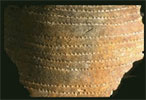
- The Amesbury Archer was a Bronze Age skeleton discovered in 2002 in Wiltshire, England. He is thought to have lived approximately 4,300 years ago and is known for his possessions, which included a large collection of artifacts and weaponry, including a set of antlers and an archer's wristguard. His presence has been a subject of debate among archaeologists as to whether he was a high-status individual, a foreigner, or a member of a forgotten culture.
- The discovery of the Amesbury Archer has had a significant impact on British history, as it has provided valuable insight into the life of the people in the Bronze Age.
- The archer's possessions have allowed archaeologists to gain a better understanding of the culture and technology of the time, such as their use of bronze and the development of archery. His presence has also raised questions about how the people of the Bronze Age interacted with each other, as well as the possible presence of a lost culture that may have been separate from the mainstream cultures of the time.
- The Amesbury Archer has also provided evidence for the large-scale migrations that occurred during the Bronze Age. The fact that he had possessions from both the Rhineland and Britain suggests that there was a great deal of movement between these two regions during this period, which has helped to shed light on the history of trade and cultural exchange between them.
- The discovery of the Amesbury Archer has been important in terms of how it has changed our understanding of the past.
- As a result of the archer's presence, archaeologists have been able to gain a better understanding of the people of the Bronze Age, as well as the cultural and technological advances of the time. It has also allowed us to gain a better understanding of the migrations that occurred during this period, which has been crucial to our understanding of the cultural exchange between different regions.

Hutton's books on paganism have received some criticism from certain ...
In Search of the Red Slave (the last in combination with his partner Karen Godden). He has carried out excavations in South Uist, Madagascar and at Durrington Walls as part of the Stonehenge Riverside Project.
His most generally held academic works are The Stone Circles of the British and The Stonehenge people, each of which is held in over 1300 libraries universally. It also provides a new interpretation of Stonehenge. Includes a greatly expanded gazetteer, and an up-to-date list of radiocarbon dates and recent excavations.
Book Name:The Age of Stonehenge book written by Colin Burgess.
Complementary lifestyles are recorded by the isotope composition of Bronze Age Beaker people (c. 2500–2000 bc) from three funeral sites or near to the Stonehenge memorial in Wiltshire, southern England. Seven individuals (three adults, a sub-adult, two juveniles and an infant) were recovered from a single grave at Boscombe Down.
oxygen isotope analysis specify that this man originally came from somewhere in the Alpine area of Europe.
A 'Beaker' era burial from a cemetery on Net Down, near Shrewton, a few miles from Stonehenge
Amesbury Archer (or King of Stonehenge) is an early Bronze Age man, dating to around 2300 BC. His grave is of particular importance because of the rich valuables and the earliest gold objects ever found in England.
Otzi the Iceman is well naturally preserved mummy of a man. The man who was been captured in Ice was believed to be over 53 centuries old (3300 BC).
Java man is an interesting discovery to note that the find was not a complete specimen, but consisted merely of a skullcap, a femur, and three teeth. Many scientists of the day even suggested that Dubois' Java Man might have been the so-called "missing link
Kennewick Man is the name for the remains of a prehistoric man found on a bank of the Columbia River near Kennewick, Washington, on July 28, 1996. The Kennewick Man news story is one of the most significant archaeology stories of contemporary times.
Neandertal1 or Neanderthal was a species of genus Homo (Homo neanderthalensis) that inhabited Europe and parts of western Asia during the last ice age.
Peking Man (sometimes now called Beijing Man), also called Sinanthropus pekinensis (currently Homo erectus pekinensis), is an example of Homo erectus.
The Red Lady of Paviland is a fairly complete Upper Paleolithic-era human male skeleton dyed in red ochre, discovered in 1823 by Rev. William Buckland in one of the Paviland limestone caves of the Gower Peninsula in south Wales, dating from c29,000.
The Tollund man lived during the late 5th century BC and/or early 4th century BC, about 2,400 years . He was buried in a peat bog on the Jutland Peninsula in Denmark, a find known as a bog body.
Turkana Boy, the designation given to fossil KNM-WT (Kenya National Museum-West Turkana), is a nearly complete skeleton of a 12-year-old hominid boy who died 1.6 million years ago.Turkana Boy is classified as either Homo erectus or Homo ergaster.
The Dead Sea Scrolls are a collection of about 850 documents, including texts from the Hebrew Bible, which were discovered in eleven caves near Qumran, in a fortress northwest of the Dead Sea in Israel.
The Narmer Palette, or Great Hierakonpolis Palette, is a significant Egyptian archeological find, dating from about 3200 BC, containing some of the earliest hieroglyphic inscriptions ever found, and depicting the unification of Upper and Lower Egypt under Narmer.
Rosetta Stone is a dark granite stone (often incorrectly identified as "basalt") which provided modern researchers with translations of ancient text in Egyptian demotic script, Greek, and Egyptian hieroglyphics.
Linear B is the script that was used for writing Mycenaean, an early form of the Greek language. It occurrs primarily on tablets dated from the 14th and 13th centuries BC.
The Sweet Track is an ancient roadway in the Somerset Levels, England. As of the early 2000s, it is the oldest known engineered roadway in the world. An grand footpath that ran for almost 2km across the Somerset levels swamps.
Tautavel Man is an ancestor of Neanderthal man, was slightly different from his contemporaries living Asia and Africa. In the village of Tautavel is located in the South of France, one of the most ancient humans was found: the Tautavel Man.
The Galilee Boat which is also referred as the "Jesus Boat" was found by local Galilean inhabitants in January 1986. The boat was wrapped in a polyurethane shell and then immersed in a special tank of water to avoid quick disintegration.
The monumental Ekron inscription is dated, statistically and historically, to the first half of the seventh century B.C.E. The five lines of the inscription are together with this in a slit open border.
It wasn't long back when a lot of scholars were quizzical the real survival of a Roman Governor with the name Pontius Pilate, the procurator who ordered Jesus' crucifixion. In June 1961 close to Caesarea-on-the-Sea (Maritima) was unearthed this appealing limestone block.
In 1990 ornately decorate limestone ossuary (bone depository) was found in Jerusalem's Peace Forest. In the ossuary were the bones of two babies, a adolescent child, a teenage boy, an adult woman, and a man about 60years of age.
In biblical Israel, papyrus was the main form of writing substance. Once an authorized deed was written, it would be rolled up, one end crinkled in one-third of the width and the contrary end likewise folded in.
It is the Capital city of a prehistoric principality in what these days is on the northern part of the Syrian coast, just north of the city of Latakia.


